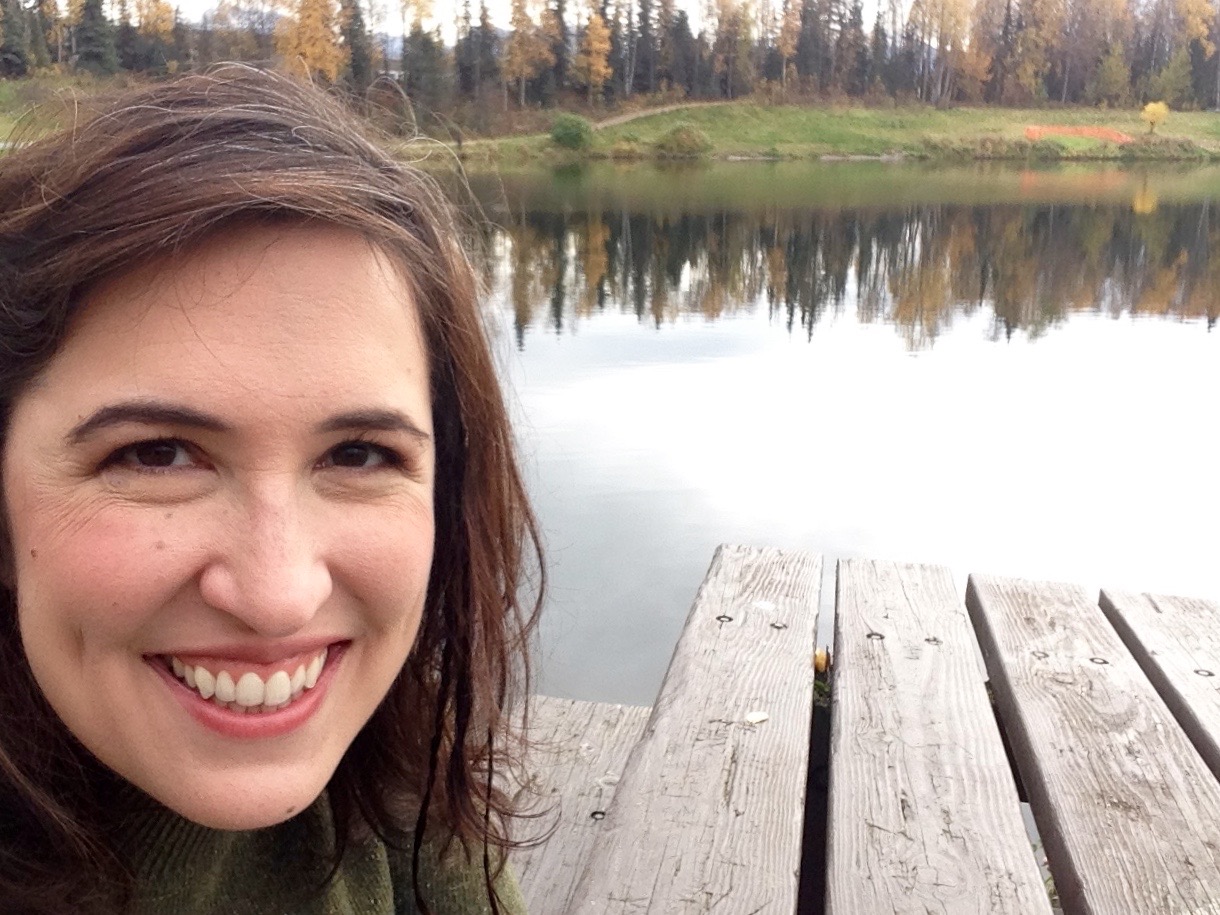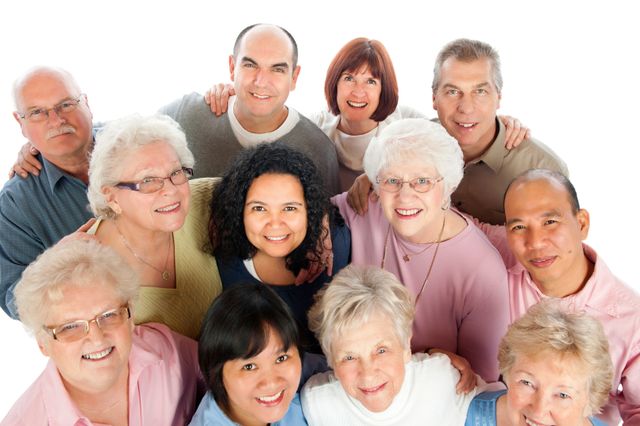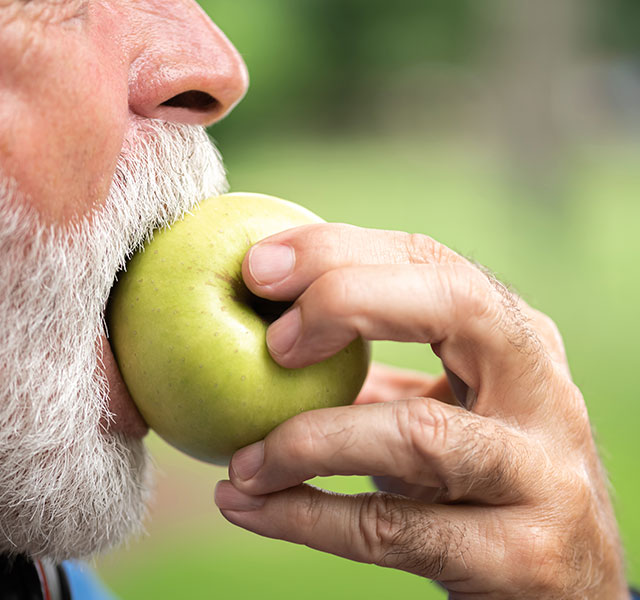This is part 1 in our series on aging-related philanthropy. Read part 2 here.
There’s an odd dichotomy in the philanthropic world.
Every year, American grantmakers donate tens of billions of dollars to nonprofits, to help make the world a better place. Yet only 1 percent of those dollars goes to aging-related projects, according to the Foundation Center, which analyzed grants of over $10,000 made in 2015 by 1,000 of the largest US foundations. By contrast, 28 percent goes to projects for children and youth.
This is nothing new. Other studies have found similar results over the years. But as the percentage of older people increases (16 percent in the United States and rising), the need to ensure that people of all ages are supported gains more and more urgency.
There are a few main reasons aging-related funding is so low. On the grantmakers’ side, there’s an attitude of negativity and hopelessness. On the side of the charities receiving the grants, there’s a lack of focus on fundraising.
So for charities, the key to change is focus: focus on fundraising and focus on a new message—one of positivity and opportunity.
For grantmakers, the key may be openness to new ideas, because this new messaging is counter to what our society has led them to believe.
A Hard Sell
“Children are an investment. Old people are an expense.” This is the attitude John Feather, chief executive officer of the industry organization Grantmakers in Aging, says he faces often when encouraging philanthropies to donate more to aging-related initiatives.
Katherine Klotzburger agrees that ageism is a key problem. “We applaud people for getting to be 90, but we don’t want to support that,” says Klotzburger, founder and president of the Silver Century Foundation, the organization that commissioned this article—and one of the few foundations that focus solely on aging-related grantmaking.
“Aging is just a hard sell across the board,” Feather says. “It’s hard to get people to focus on it. It’s hard to get people to identify with it. People want to avoid the topic.”
And it’s easy to avoid, because society doesn’t focus on it either, says Klotzburger. “There’s just not as much emphasis, not as much information, not as much discussion about the problems for older people,” she says. “People just don’t know about it.”
Funders tend to donate to causes that get a lot of airplay, according to Klotzburger. For example, behind religion, education receives the highest percentage of privately donated dollars, per the Giving USA Foundation.
As the huge boomer generation ages, philanthropy will play an increasingly significant role.
Charitable grantmakers also tend to assume the government has older people covered.
Yet “all of the federal aging programs put together that are not health care are less than what Medicare spends in a day,” Feather says. “Medicare is an essential piece. But there are lots of other programs—social services, congregate meals—that have gotten squeezed and squeezed and squeezed until there’s just not a whole lot left.”
And some, such as nursing homes and assisted living communities, tend to focus on earned fees rather than private grants.
As the large boomer population ages, “earned revenue and public funding [will] go only so far,” cautions Giving and the Golden Years, a 2017 report from the Giving USA Foundation, which regularly publishes data about charitable giving. “Philanthropy will play an increasingly significant role.”
So grantmakers have a growing opportunity to jump in and make a difference. But first, they need to understand that they really can help change things.
Overwhelming Need
Determining exactly how many dollars from philanthropic foundations go toward aging-related issues is tricky. Generally, only grants that have something like “aging” or “seniors” in the title are counted, Feather says. So lung-cancer research, for example, isn’t necessarily included, even though most people with lung cancer are 65 or older.
But Feather argues that the important thing is, the percentage is small—whatever the exact number. “And it hasn’t changed in 25 years—even as the population of older people continues to grow.”
In fact, that population growth actually may be working against the push to increase funding. Trustees of grantmaking foundations continually tell Feather that a main reason they don’t want to get into aging-related philanthropy is that it’s overwhelming: the problems are too big; they don’t know where to start; their money won’t make a dent.
Katie Midgley confronted this feeling at her own organization. She’s the director of research and evaluation at the Plough Foundation in Memphis, TN. Its mission is to do the greatest good for the greatest number of people in its city and county. The foundation hired Midgley in 2011 to research whether it should delve more into the aging realm.
So Midgley set out to assess Memphis’ needs. She interviewed dozens of leaders around town and found that not only was the community in need but the leaders themselves were too. “I don’t know where to turn. I don’t know what to do,” they would tell her. “When my mom needs help, who do I call?”
“So it was just astonishing, really, to see the level of need,” she says.
Through her research, Midgley identified seven areas that required attention: caregiver support and respite, transportation, elder abuse, aging in place, basic needs (such as medicine and food), end-of-life planning, and the need for social engagement and purpose.
But when she presented her findings to the board, “They said, ‘Katie, you’ve done a great job. But here’s the thing. That’s everything.’ And it was,” she says. “It’s tons of stuff. So how do we narrow?”
Just One Thing
To counter that overwhelmed feeling, when Feather talks with grantmaking foundations, he doesn’t immediately advise them to create an entire funding initiative around aging. “That gets nowhere,” he says.
Instead, he encourages them to look at the work they already do through an “aging lens.”
For example, when talking to grantmakers with a focus on rural economic development, Feather may point out that a third of the community they’re serving is 65 or older. He can then encourage the funders to think about expanding the work they’re already doing simply by paying closer attention to these people’s needs.
If the foundation is working on improving transportation, for instance, that’s already an important issue for older people. Finding ways to help them get around better would fit smoothly into the foundation’s mission.
Society is looking for solutions to the problems of an aging population, and there is vast opportunity for innovation.
Feather points out that grantmakers also need to understand that one small project can make a big impact. And it can get the ball rolling on grander innovations.
Efforts to make cities more age friendly often start small, he says—for example, with a community garden. A garden can launch relationships, bring generations together and improve the neighborhood—all the while, strategically building public support and political will for further projects.
For its part, the Plough Foundation ended up conducting a citywide survey to determine where to focus its efforts.
“We realized we’d made a fundamental error, and it was that we had not involved seniors in some way in our process for input,” Midgley says. “Too often, I think folks—very well-intentioned, thoughtful, smart people—sit in rooms and make decisions about serving people and never ask them what they think or what they need.”
As a result of hearing from citizens, one project the Plough Foundation homed in on was home modifications for aging in place. “Memphis has a huge housing stock that’s poor quality,” Midgley says. “We did not have a group at that time [that] was doing home repair and modifications.” So in 2014, they gave Habitat for Humanity of Greater Memphis a grant to get started on that. The project is still active.
Innovation
In addition to lamenting that the problems are too overwhelming, philanthropists also often tell Feather the aging sector is depressing.
This belief may be partly due to how people view their own aging. “Ironically, people’s fatalism and anxiety about the aging process also mute their ability to think about efforts and interventions to improve the experience of adult aging,” says Gauging Aging, a 2015 report from the FrameWorks Institute, an organization that helps nonprofits communicate effectively. “Assuming that deterioration is inevitable, people are less able to think productively about solutions and the pragmatic actions that could be taken to improve life for older adults, and society more generally.”
But if people can look past that internalized negativity, experts say, they might find that rather than depressing, the aging arena is exciting. There is vast opportunity for innovation. Society is looking for solutions. Grantmaking philanthropists can help develop them.
“In our country, innovation drives success,” says a FrameWorks Institute report from 2017. “We need to apply our tradition of innovation to an important social problem: a culture that prevents older people from living full, productive lives.… To fully capture the massive energy of our ever-aging population, we need to think differently—and innovatively.”
As an example, the study cites a program that “brings older people and preschool children together in local community centers.” The older people’s well-being is enhanced, and the children improve their social and emotional skills. “Innovative programs benefit the old and young alike—and they prove that we can use our tradition of innovation to tackle new challenges.”
One of the sectors Klotzburger finds most innovative right now is so-called senior living. Experimental congregate housing models and care models are being developed. Communities for older citizens are being built in walkable downtown areas, so residents can participate in town life.
Two sectors she finds particularly ripe for more innovation are disaster preparedness and think tanks. Grantmakers could make an immediate impact in disaster preparedness—helping cities and older people mitigate problems such as being stuck in a high rise with no electricity, being stranded at a house without a car, and being unable to afford air conditioning or heat. And think tanks could help solve the societal issues that lead to such situations.
Aging Philanthropists
As America ages, some of its grantmaking philanthropists are also getting older. Time will tell whether donations to aging-related projects will increase because of that. But at least one sign points to maybe: studies show that as a whole, when it comes to making charitable donations, boomers are more self-interested than their parents and grandparents, says Cedric Richner, cofounder and president of Richner + Richner, a fund-raising-consulting firm that specializes in aging-services organizations.
Boomers tend to donate to charities not just because it’s a good thing to do but because it’s a good thing for them, Richner says. They want to know what impact their contribution will make and how they’ll benefit.
Because of their age, boomers may directly benefit from aging-related initiatives. But another plus for a donor of any age can simply be feeling appreciated. So Richner advises charities to develop strong donor-recognition programs and ensure good stewardship—continually explaining gifts’ impacts.
If charities can adjust their messaging to help grantmakers get past ageism and negativity, the aging-philanthropy landscape may change for the better.
“The truth is that seniors are a great asset, and we don’t celebrate and look at that enough.” And that is a message that needs to get out there, Midgley says. “They’re caregiving for folks, they’re volunteering, they’re giving to charitable organizations regardless of income.”
Besides, society must not simply abandon a huge segment of the population, says Klotzburger. “We’re modern, 21st-century people. We don’t get rid of people just because they turn 50 or 65.”
Investing in older people means investing in the community. Everyone benefits for years to come—including the grantmakers, who could possibly make all the difference.

Leigh Ann Hubbard is a professional freelance journalist who specializes in health, aging, the American South and Alaska. Prior to her full-time freelance career, Leigh Ann worked at CNN and served as managing editor for a national health magazine. A proud aunt, Leigh Ann splits her time between Mississippi and Alaska.



